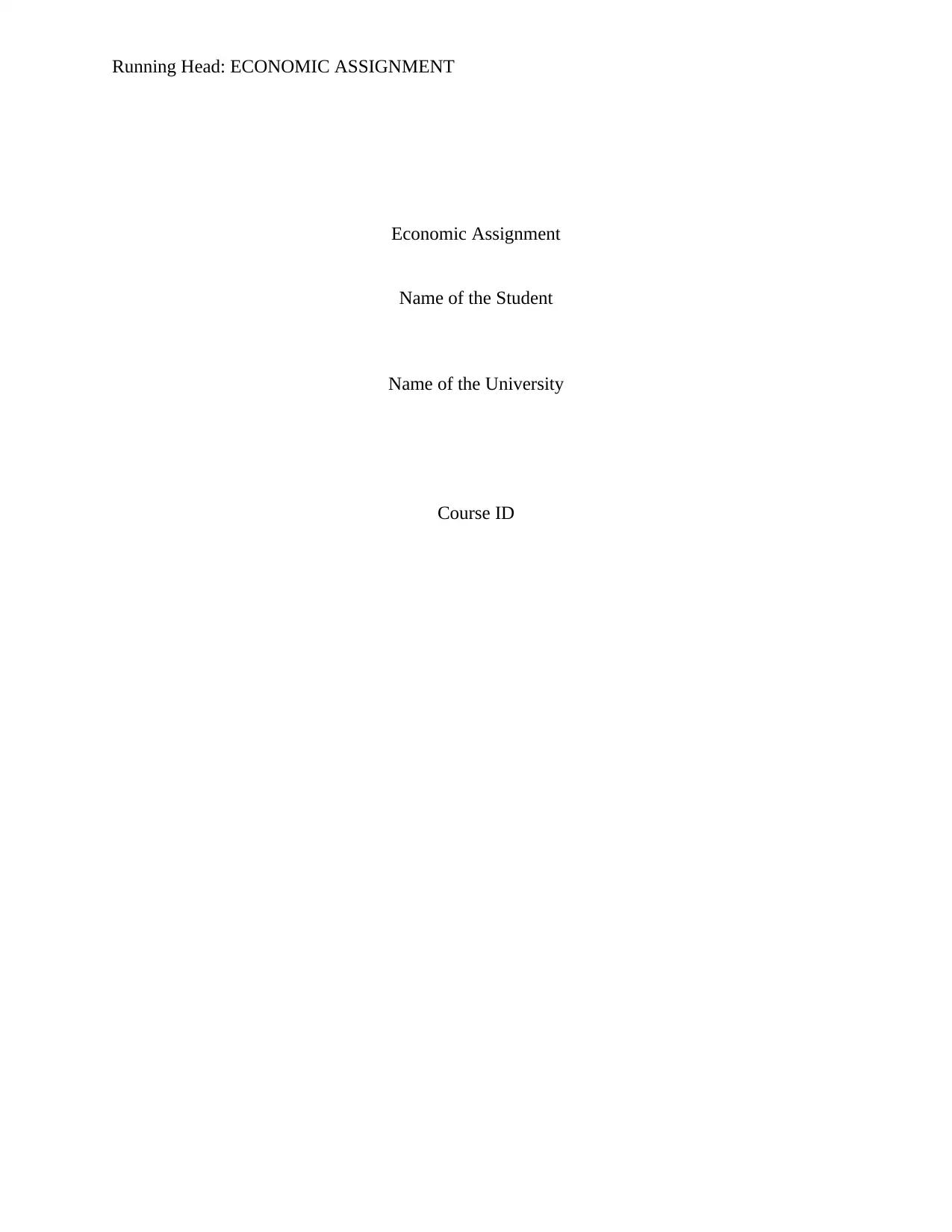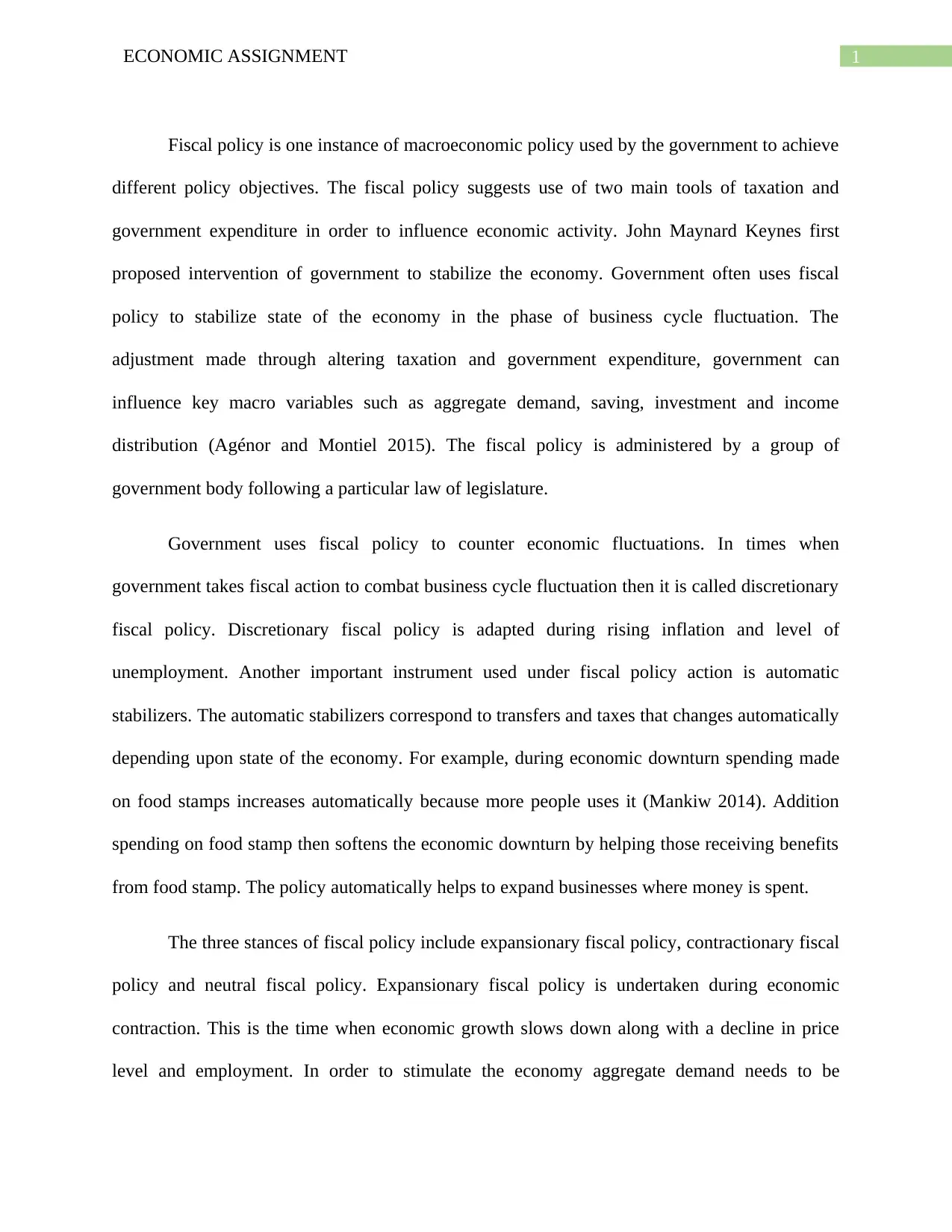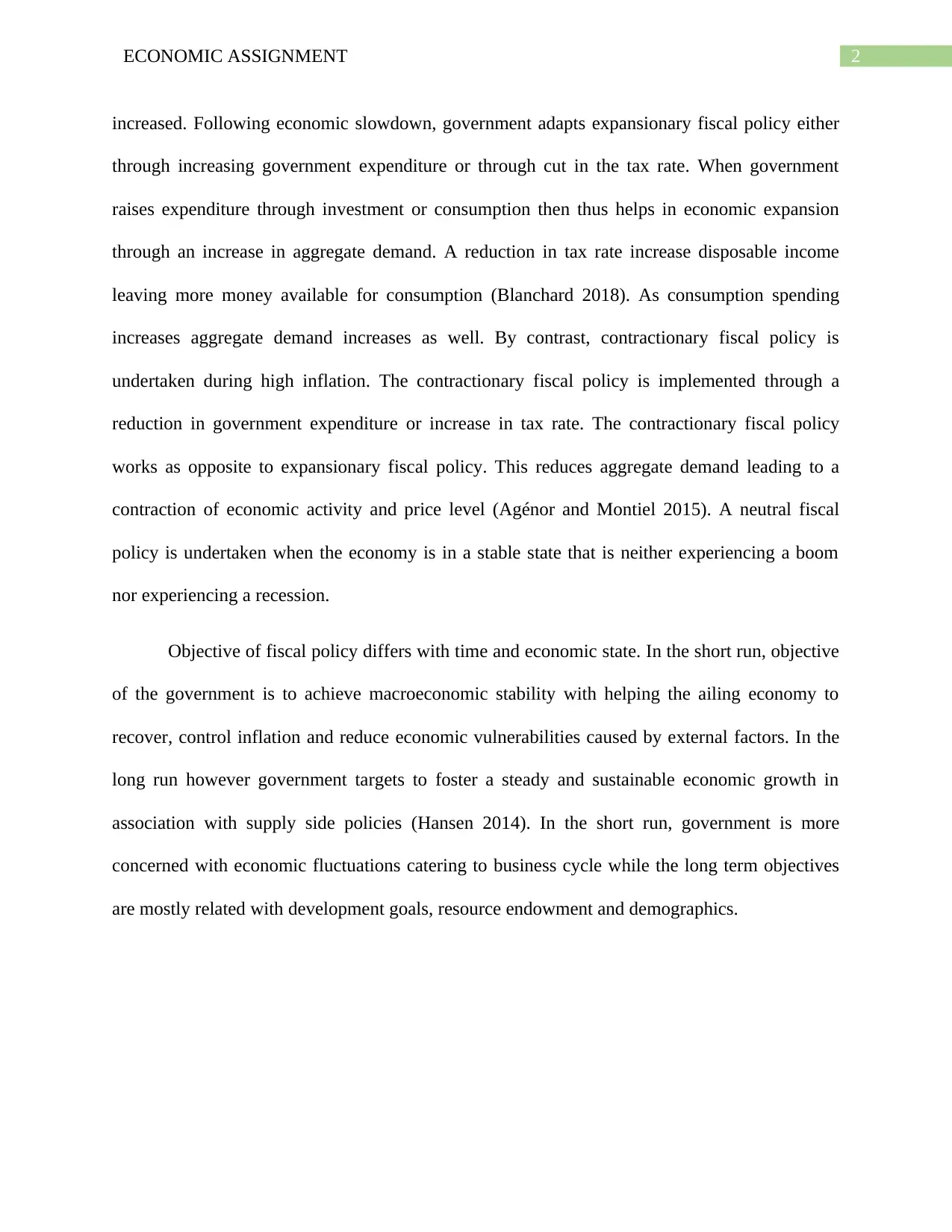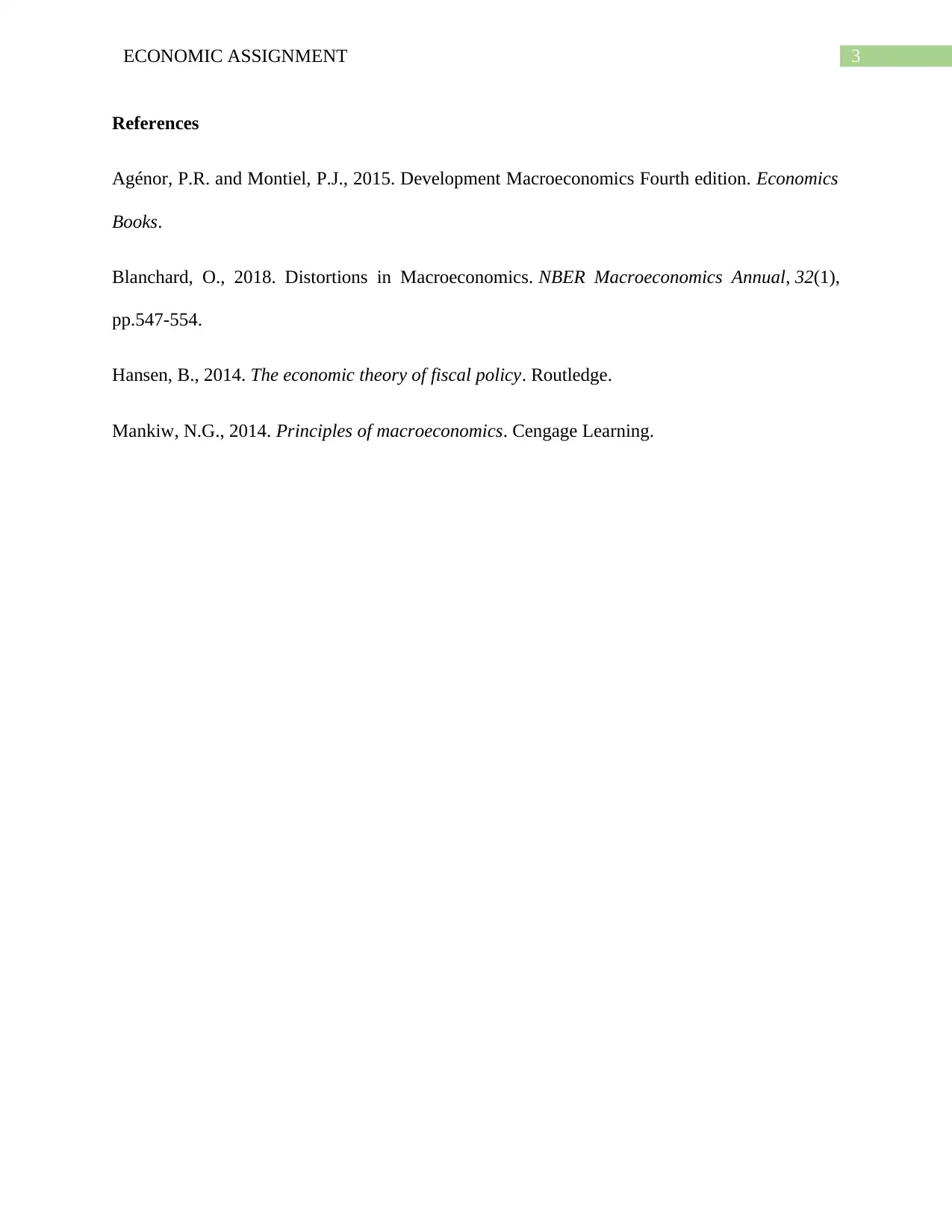Understanding Fiscal Policy: Tools, Stances, and Objectives
VerifiedAdded on 2023/06/11
|4
|667
|264
AI Summary
This article discusses fiscal policy, its tools, stances, and objectives. It explains how the government uses taxation and government expenditure to influence economic activity. The article also covers the three stances of fiscal policy, which are expansionary, contractionary, and neutral. Additionally, it highlights the short-term and long-term objectives of fiscal policy. The article is relevant for students studying economics and related courses.
Contribute Materials
Your contribution can guide someone’s learning journey. Share your
documents today.
1 out of 4










![[object Object]](/_next/static/media/star-bottom.7253800d.svg)